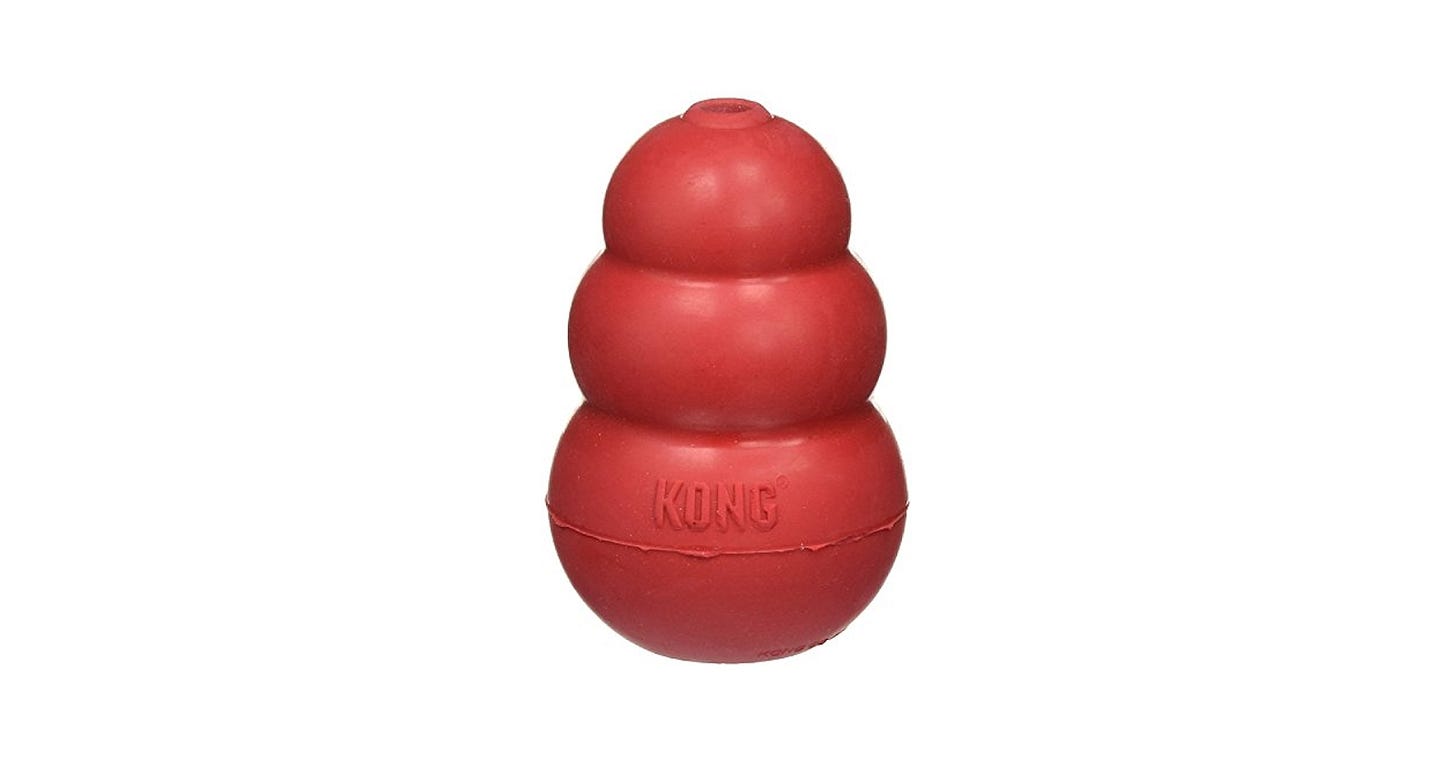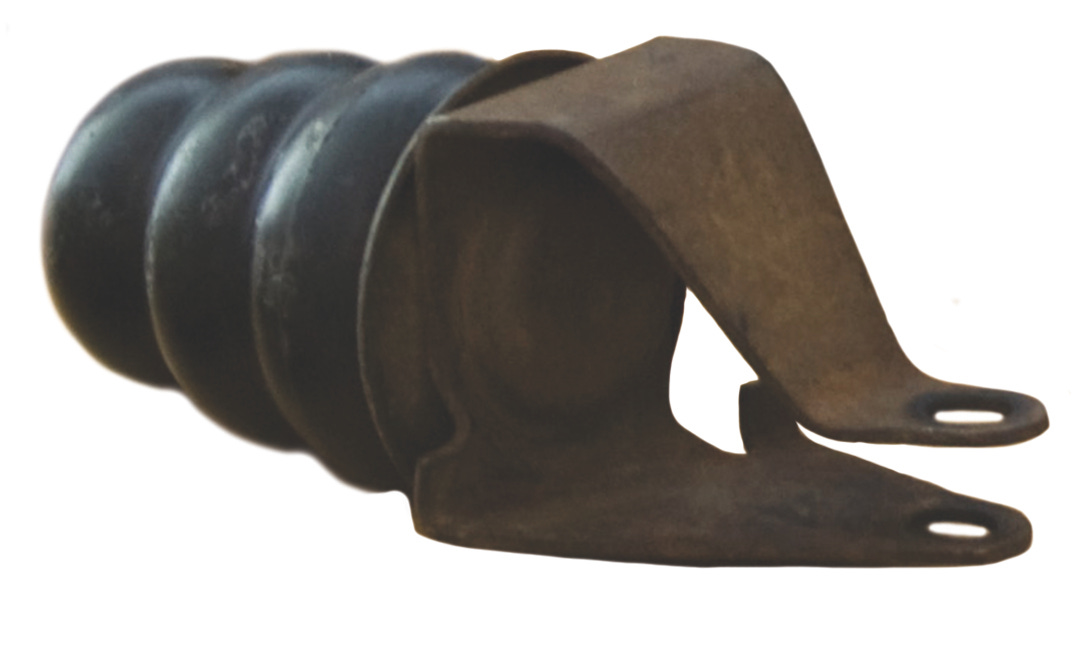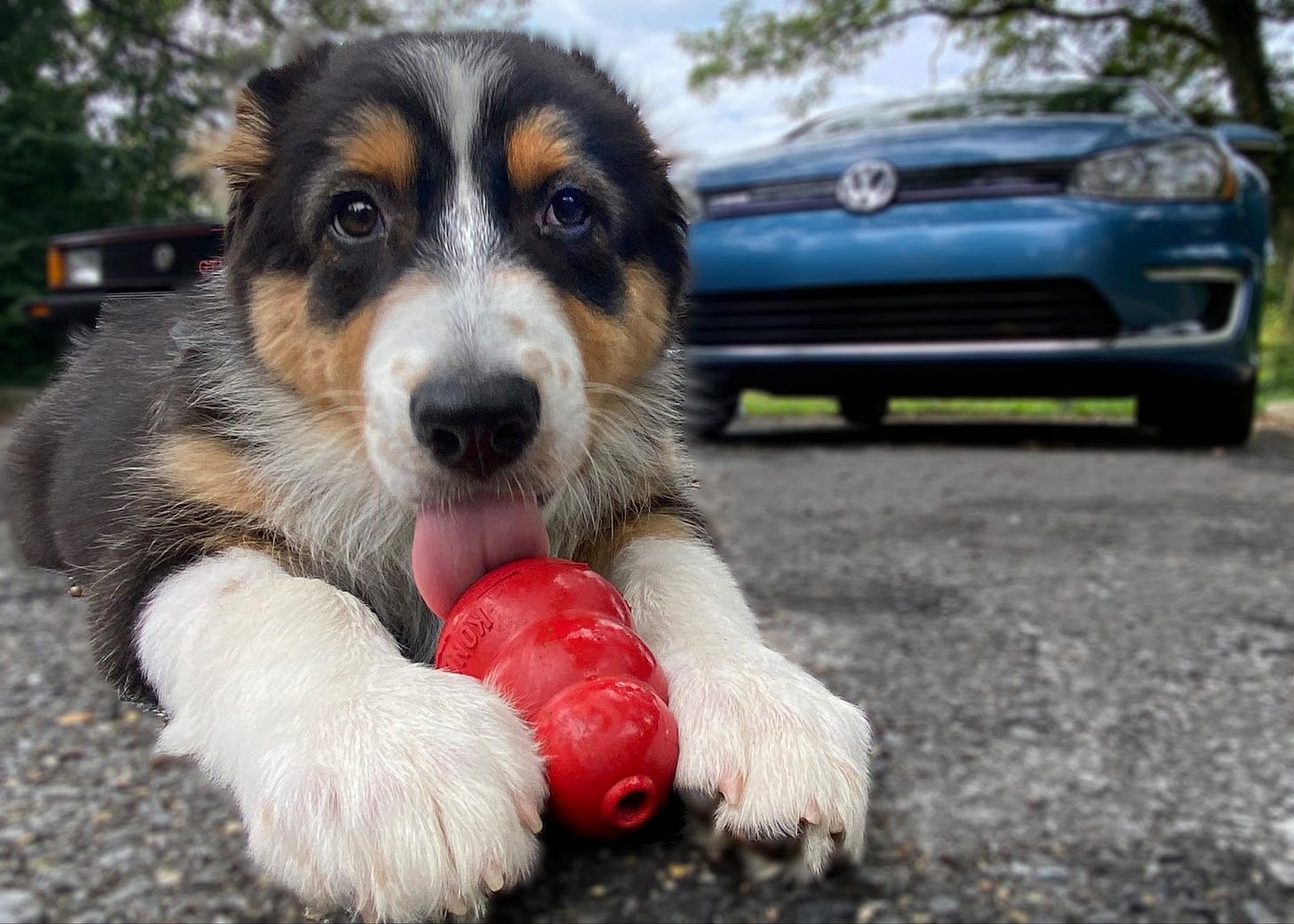Ryan McManus | August 26, 2025
The Kong Edition
On accidental design, incessant chewing, and the brilliance of the VW axle stop.
Ryan McManus (RMM) works in intelligence for Ford Motor Co. and is a longstanding friend of WITI. He has previously written about the end of spare parts, the simple elegance of SecuriCode, and how to start your own town. He’s more of a cat person.
Ryan here. The red, rubbery (and slightly erotic?) snowman shape above may appear unfamiliar to many of you, but there are two types of people for whom it is instantly recognizable: dog owners, and Volkswagen Bus owners. It is the Kong chew toy, a classic beloved by pooches and their owners since 1976. Known for its unpredictable bounce, nearly indestructible construction, and hollow core for hiding treats, the Kong performs like it was invented by an obsessed genius in some corporate laboratory specifically to meet the particular needs of the canine mind.
Except, it wasn’t. The original was invented by the Volkswagen Group. And it wasn’t meant for dogs at all.
Why is this interesting?
It’s 1970. A guy named Joe Markham is operating a garage in downtown Denver, which at the time was plagued by burglaries. The local police were unable to provide much in the way of protection except for a bit of advice: Every good junkyard has a dog.
Turns out Joe knew of a dog in need of a home who might fit the bill—a German shepherd named Fritz, who was originally destined to become a K9 officer with the Denver Police Department, except for one problem—Fritz could not stop chewing.
Fritz would chew anything—dog bones, radiator hoses, even rocks. The last one got Joe worried, as Fritz’s obsessive rock chewing was wearing down his teeth. Then one day, as the legend goes, Joe was tearing down the suspension of a customer’s late 60’s VW Type 2 Bus (the hippie kind) when he heard Fritz going crazy: The dog was chewing on a bulbous rubber axle stop that had been laid aside during the repair.
Axle stops are a high-density rubber component of certain types of suspensions, designed to keep the axle from contacting the leaf springs under heavy load. By design, they need to be durable, offset deflection, and retain their shape under duress. This also turns out to be the ideal qualities of a chew toy.
The Kong represents a perfect case study in accidental innovation: The VW Bus bump stop had a distinctive conical shape: wider at the bottom to distribute impact force over a larger area, then tapering to a narrower top to fit snugly into the suspension housing. This automotive engineering requirement created an inherently unstable shape that would bounce erratically in any direction when dropped.
What’s wild is how perfectly this automotive function translated to canine psychology, despite serving a completely different purpose. Dogs are natural problem-solvers and foragers, with hunting instincts that crave unpredictable movement patterns. The bump stop's engineered instability—designed to absorb mechanical shock—accidentally became the perfect trigger for prey drive. Meanwhile, the hollow interior meant for fitting into suspension housing became an ideal treat-dispensing puzzle. All Joe had to do was find a German rubber supplier and make it red.
The Kong's enduring success also highlights something deeper about design durability. In a world where pet products are constantly reinvented with high-tech features and colorful gimmicks, the Kong has remained virtually unchanged because Markham accidentally got the fundamentals exactly right the first time. Like the automotive keypad or other "boring" technologies, sometimes the most innovative solution is also the simplest one that addresses core behavioral needs, rather than superficial wants.
Perhaps most remarkably, the Kong has transcended its original purpose entirely. Veterinarians now routinely recommend Kongs for everything from puppy teething to separation anxiety to post-surgery recovery. It's become a legitimate therapeutic device, proving that great accidental design often reveals applications far beyond what the inventor initially imagined.
Not bad for a piece of automotive rubber that was designed to keep hippies from harshing their vibe. (RMM)


